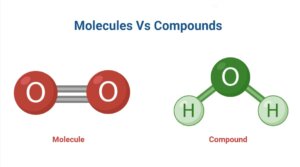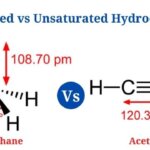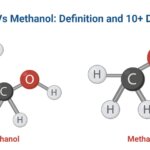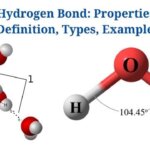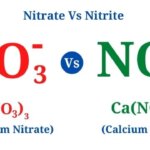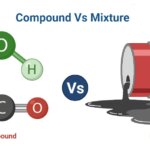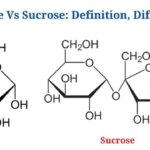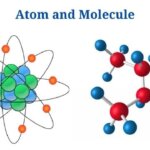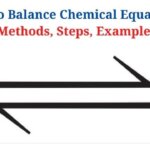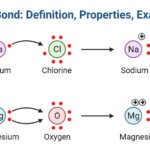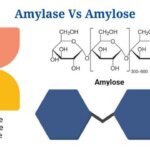Definition of Molecules
A molecule is the smallest identifiable unit of a substance which has the substance’s composition as well as chemical properties. It is made up of two or more atoms of the same or distinct atoms.
Molecules are single units of a pure material or a compound which interact with one another to give the complex structure as well as other qualities.
- These are generated when atoms are close enough together for their electron clouds to interact with one another and their nuclei.
- Molecules can be homonuclear or heteronuclear in structure. Heteronuclear molecules are made up of atoms from different elements, whereas homonuclear molecules are made up of atoms from the same element.
- Molecules are further classified into groups based on the sort of link that exists between the atoms. Covalent as well as ionic bondings are both possible in molecules.
- Depending on the electronic configuration of the atoms, the ratio of the number of atoms present in a given molecule remains constant.
- Depending on the elements, molecules can be diatomic (two atoms) or polyatomic (more than two atoms).
- The arrangement of bonds defines the structure of molecules that is primarily directed since atoms tend to obtain places that enhance bond strength.
- Avogadro’s number (6.022×1023) is the number of molecules in a mole of a substance that remains constant in all substances.
- Molecular weight, that is the sum of the atomic weights of the atoms in the molecule, can be used to calculate the mass of a molecule.
- A substance’s molecules are represented by molecular formulae which include symbols, numbers, as well as other special characters.
- Molecules are smaller units of compounds that interact with one another via van der Waal’s attraction force.
- Examples of molecules include O2, N2, H2, NH3, CO2, as well as others.
Definition of Compounds
Compounds are chemical compounds made up of molecules having two or more atoms of various elements which are chemically bonded together.
- There are various sorts of compounds, each defined by the elements as well as chemical bonds present. In the presence of covalent, ionic, as well as metallic links, compounds can be covalent, ionic, or metallic.
- The amount of atoms in the compound as well as the type of bonding between them influence the complex’s properties.
- Chemical reactions between two different compounds can also produce certain compounds, in which the bonds in the original molecules are disrupted as well as new bonds are generated.
- There are over 3000 distinct chemicals that have been approved for use all around the world.
- Compounds, such as molecules, have stoichiometric atom proportions that are constant throughout the compound, regardless of the source.
- Compounds are always heteronuclear since they comprise atoms from many elements, as well as they are also impure things. Compounds are made up of atoms from the same elements that are linked together.
- Chemical formulae, also referred as molecular formulas, are made up of symbols, numbers, as well as symbols that represent chemical compounds.
- Since the molecules are either ordered (in solids) or scattered (in liquids), compounds tend to have rigid structures (gases). The structure as well as stiffness of compounds are influenced by the interaction between molecules as well as their sizes.
- Chemical processes that result in the breaking of chemical bonds can break down compounds into individual elements.
- They are also more stable since they have a physical form, as opposed to molecules, that are less stable.
Key Difference between Molecules and Compounds
(Molecules Vs Compounds)
Molecules Examples
Ozone is an example of a molecule (O3)
- Ozone is a unique sort of oxygen molecule that consists of three oxygen atoms that are covalently bound to one another.
- Ozone is referred to as a trioxygen molecule since it differs from ordinary two-atom oxygen molecules.
- It’s known as an oxygen allotrope, as well as it’s less stable than diatomic oxygen molecules.
- In the presence of UV radiation as well as electrical discharges in the Earth’s atmosphere, ozone is created from diatomic oxygen.
- It is present all over the atmosphere, yet the largest concentration is found in the stratosphere’s ozone layer. It rapidly breaks down to generate dioxygen at lower air levels since it is relatively unstable.
- Ozone is an important component of the atmosphere since it stops UV rays from reaching the Earth‘s surface.
- Ozone is a powerful oxidant which is employed in a variety of sectors for oxidation-related applications.
Compounds Examples
Sodium Chloride is an example of a compound (NaCl)
- Table salt, commonly known as sodium chloride, is an ionic substance made up of sodium as well as chlorine atoms.
- The compound is solid crystalline in nature, with molecules organised in crystal lattices. To make a regular octahedron, each ion is surrounded by six oppositely charged ions.
- Sodium chloride is found naturally in the sea, where minute sea salt particles are either suspended or removed.
- The atoms of sodium as well as chlorine are in a 1:1 ratio as well as are connected by a single ionic connection.
- Sodium chloride is an important part of our diet since it regulates the salt content of our physiological fluids.
Related Posts
- Dissecting Microscope (Stereo Microscope) Definition, Principle, Uses, Parts
- Saturated vs Unsaturated Hydrocarbons: Definition, Differences, Examples
- Ethanol Vs Methanol: Definition and 10+ Differences
- Hydrogen Bond: Properties, Definition, Types, Examples
- Nitrate Vs Nitrite: Definition, Differences, Examples
- Aromatic Compounds vs Aliphatic Compounds: Definition, Differences, Examples
- Compound Vs Mixture: Definition, Differences, Examples
- Elements Vs Compounds: Definition, Differences, Examples
- Molecules Vs Compounds: Definition, Differences, Examples
- Hard water Vs Soft water: Definition, Differences, Examples
- Glucose Vs Sucrose: Definition and Key Differences
- 13+ Difference Between Atom and Molecule with Examples
- How to Balance Chemical Equation: Methods, Steps, Examples
- Ionic Bond: Definition, Properties, Examples
- Amylase Vs Amylose: Definition, Differences, Example

